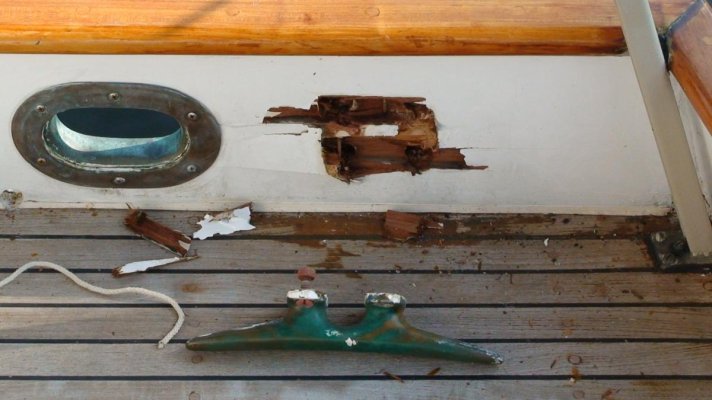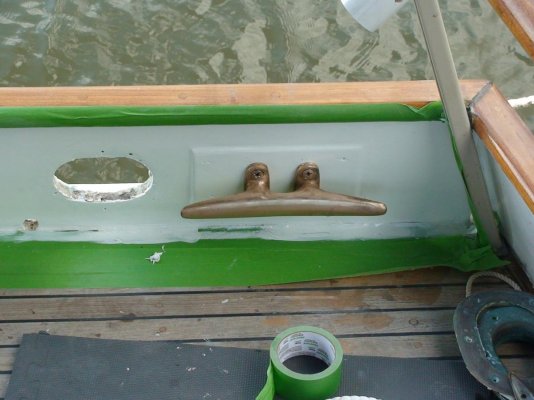The aft (vs bow) cleats on my boat are on the rail, not the deck. Adding a pair through the deck is on the short-term to do list.
They were apparently originally secured only from the top with some type of wood anchor and screws. One, or maybe both, of them popped out during a storm on the prior owner, who subsequently drilled through the gunwale to get access and thru-bolted them. I'm not sure whether it was he or the brightwork folks -- but by the time I took notice, only two of the 4 bolts in each cleat had nuts and there were no washers or backer plates.
Unfortunately, I took notice because I mistied the boat and a low, low tide came around. I was still used to California boating where all of the docks float, didn't think, and tied the boat too tight at a non-floating dock in Florida, where such things are more common. The next morning, I looked out back and saw the cleat half pulled out.
I added washers and nuts. I couldn't get a backer plate in there, but the wood was thick and solid. None-the-less, the rail is probably not the right place to secure the boat for a storm. I plan to add a couple of cleats with backer plates through the deck
I feel like I got really lucky by mistying the boat that day. Otherwise, it could have been the storm that showed me -- and that could have been expensive!


